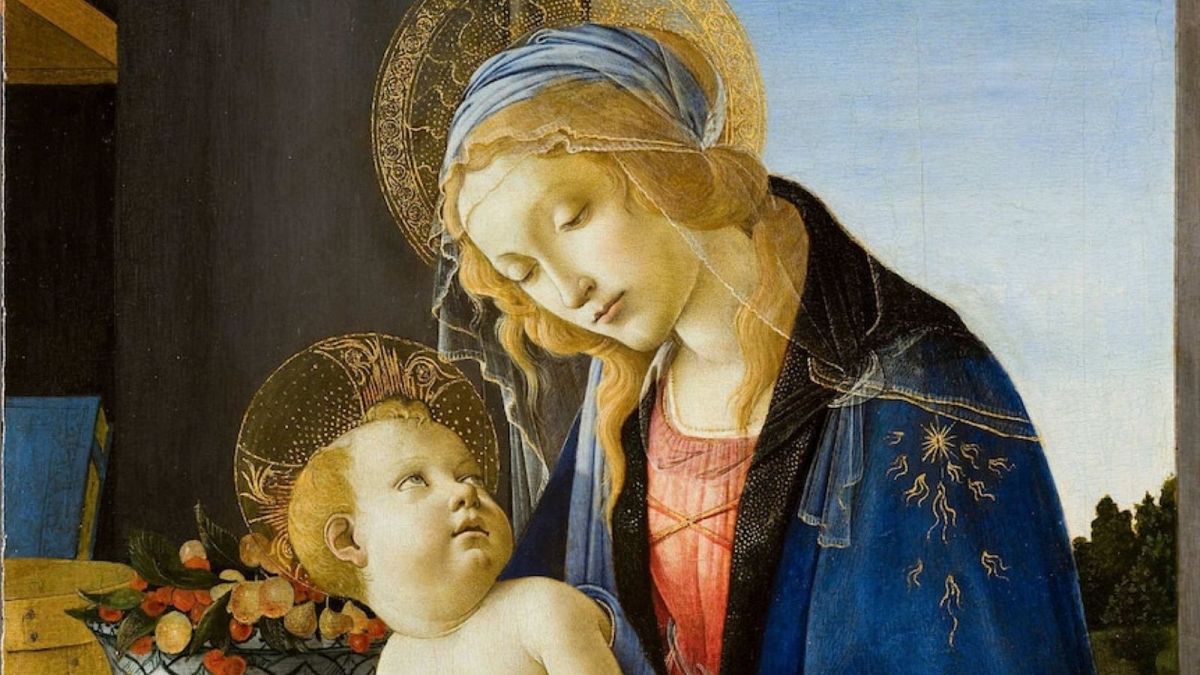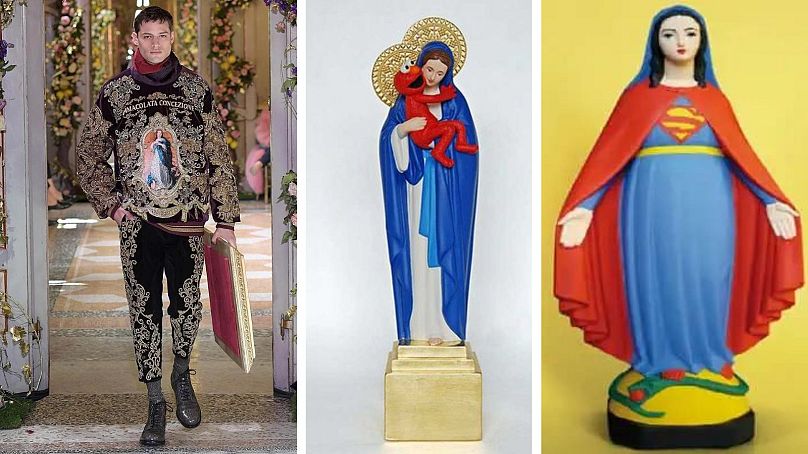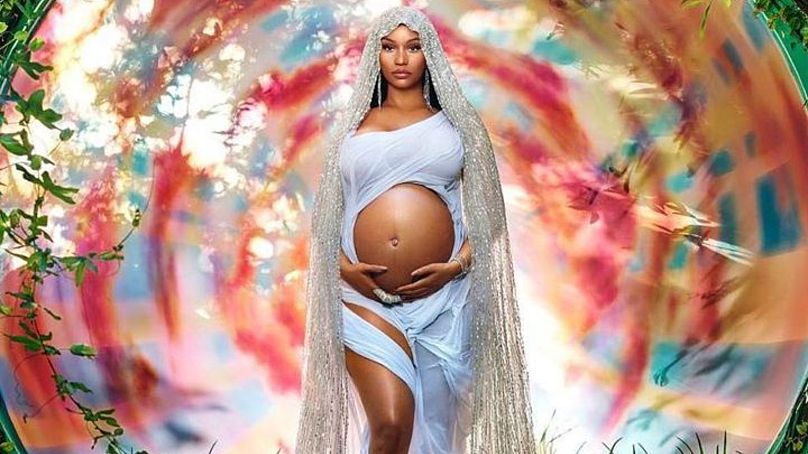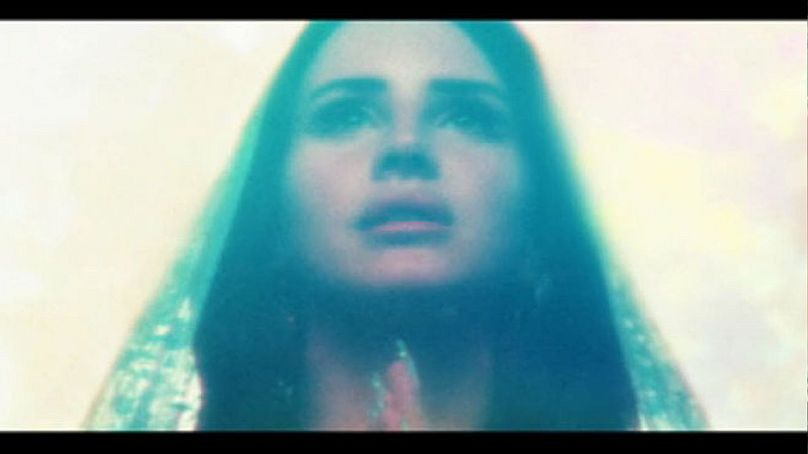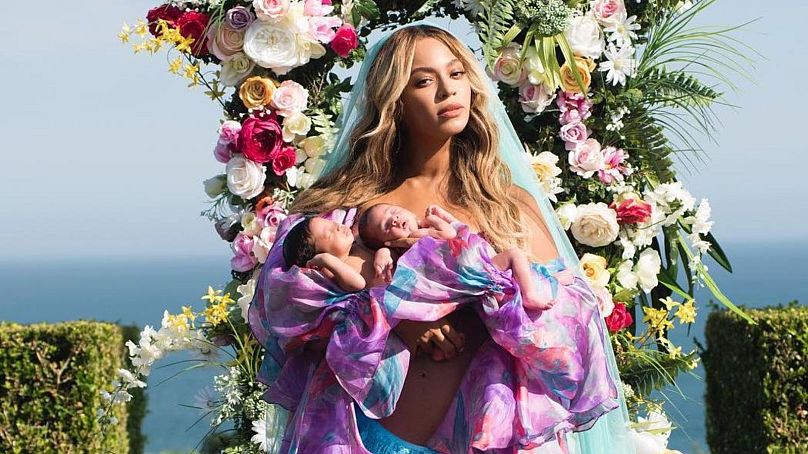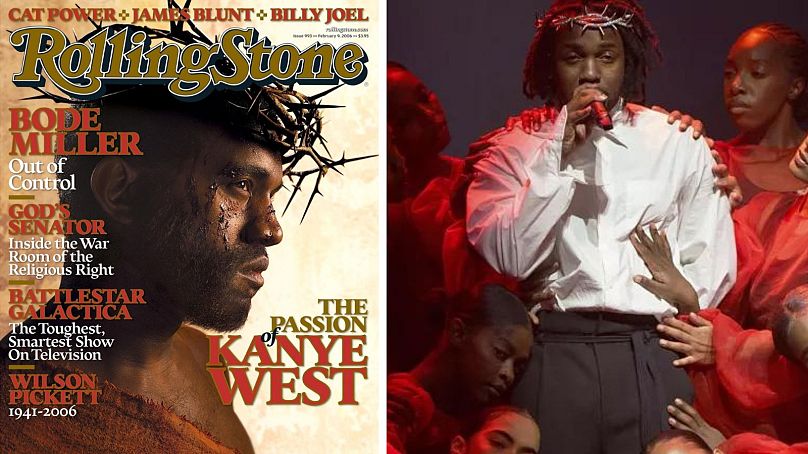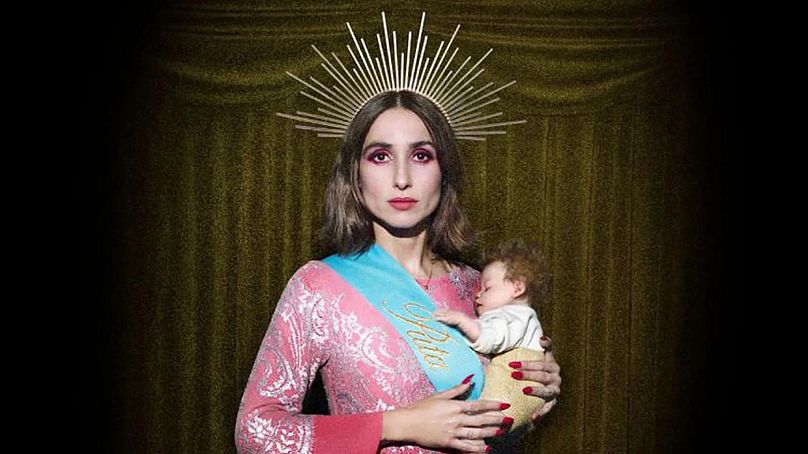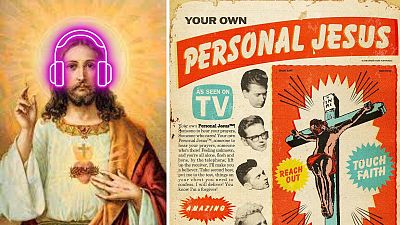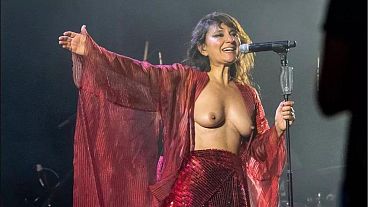When I find myself in times of trouble, Mother Mary comes to me...
Today is Assumption Day, a major Christian holiday celebrating the assumption of Virgin Mary’s body and soul to Heaven.
It is public holiday in many European countries such as Austria, Belgium, Croatia, France, Greece, Italy, Poland, Portugal, Slovenia, Spain and Switzerland.
But beyond the holy implications of the mother of Jesus ascending to her Divine Residence, it’s plain to see that the Virgin Mary has permeated pop culture for quite some time now. Whether it’s on fashion runways, pop stars using religious iconography or merchandise reproducing the religious icon, you can find reminders of Mary in all facets of culture.
Artists like French creator Soasig Chamaillard reconfigure the iconic image through the kitschy transformation of figurines into Mary as Barbie and the Pink Power Ranger, for instance, holding in some cases Pikachu or Elmo instead of baby Jesus - which has led to predictable backlash, with many deeming her work sacrilegious.
Fashion designers like Jean Paul Gaultier and Alexander McQueen have used Virgin Mary imagery in their designs, while Dolce & Gabbana always include the Madonna in their prints.
When it comes to more affordable clothing and accessories, popular examples of “religious appropriation” you may have encountered during your commute to work or while taking a stroll during weekends include tote bags with Taylor Swift posing as the Virgin Mary, surrounded by a luminous glow; prayer candles emblazoned with feminist icons and artists like Simone de Beauvoir or Frida Khalo; t-shirts featuring figures from pop culture, like the “Our Lady of Scepticism” tee boasting The X Files’ Dana Scully in a Mary pose, holding a microscope instead of the infant child.
I mention these because I happen to be wearing that very t-shirt today of all days, and may own a kitsch prayer candle with Dolly Parton wearing a saintly shroud.
As for music stars, the examples are too numerous to list.
Notable ones are Nicki Minaj and Lana Del Rey dressing up as the Mother Mary figure – Minaj during a maternity photo shoot courtesy of David LaChapelle, and Del Rey in her short film ‘Tropico’ , in which she plays both Eve and Mother Mary (while John Wayne is portrayed as God in the clip).
And then there’s Beyoncé, arguably the most famous artist to channel the Virgin Mary in not only her sensual video for the single ‘Mine’, in which she dresses as the Virgin Mary and cups the head of a young child (echoing the sculpture ‘La Pieta’ by Michelangelo, which depicts Mary holding the dead body of Jesus after the crucifixion), but also for her 2017 poses announcing her pregnancy and births.
The now-iconic photographs taken in collaboration with artist Awol Erizku and Mason Poole showed Beyoncé channelling Catholic depictions of the Virgin Mary and Our Lady of Guadalupe, as well as Oshun symbology - the goddess of the Yoruba people of Nigeria, Benin, Togo and Ghana, also celebrated in Haiti and Cuba, and associated with the concepts of fertility and motherhood.
But why are female artists and creators continuing to use the image of the Virgin Mary in their works and online promotion? Are they just tongue in cheek marks of admiration, a transgressive desire to provoke by taking something out of context and in some cases juxtaposing the sacred with what some may label profane?
One explanation could be the commentary on fandom as the new religion, with fans holding up their idols as deities – something which can very easily backfire, as celebrities are just as human as the people who choose to admire them. The perceived and internet-fuelled disconnect can lead to pretty spectacular downfalls, as the Lizzo fanbase can attest to.
Another possible answer could be: Well, if Kanye Ye West and Kendrick Lamar have reappropriated religious iconography before, as Jesus wearing the crown of thorns, why shouldn't they celebrate modern femininity in the same way?
The image of the Virgin Mary encompasses various facets, including that of motherhood, suffering, and power, and therefore can be applied to pop culture to comment on the persistence of a systematic framework within which images have been allowed to thrive as shackles through time. By reapprioriating the religious iconography and celebrating not necessarily its holiness but its symbolic multitudes, artists better embrace the complexities of being a woman, which cannot be limited to maternal roles, for example. Mary is taken away from her (rather reductive) image as a symbol of purity and fertility, and repurposed as an emblem of strength. Many medieval illustrations even show her fighting with demons, so this is hardly new.
The decontextualization of Mother Mary to reappropriate her as a feminist beacon by modern artists can be problematic for some; but for others, it stands as a defiant reclamation of the feminine divine in all its many permutations, one to better challenge sclerosed notions of purity.
The artist explores the feminine role, asserts their own imagery, and offers it up to a public to reflect on the role of women in the world.
That or Taylor Swift tote bags are just plain cool, and the whole thing limits itself to shameless (but effective) commercialisation of historic imagery, betraying either a rampant god complex or the need for certain celebrities to strive for a semblance of immortality.
Whatever the case may be, it remains fascinating. And alarming in the way intolerance still prevails, as Spanish singer Zahara found out in 2021.
One of Zahara's promotional posters for a concert in Toledo was censored because of “extreme offense to the Virgin”.
The incident is an interesting one, as the City Council of Toledo withdrew the poster of her concert due to pressure from the Spanish national conservative political party Vox.
In the poster, Zahara appeared dressed as the Virgin, with a blue band across her chest, on which the word "puta" (“bitch” - the title of her album) could be read.
Her concert was not cancelled, but the images were banned.
They clearly didn’t get the memo on rethinking notions of womanhood.
To avoid incidents like this, maybe more artists should double down and challenge the historical sacred to better comment on the still-problematic present.
Blasphemous Dolly Parton prayer candle, anyone?
